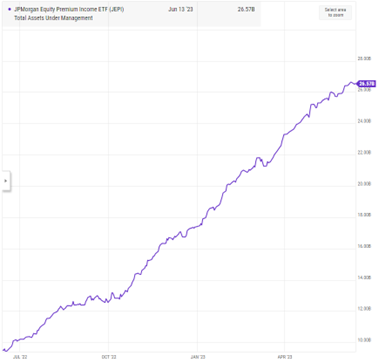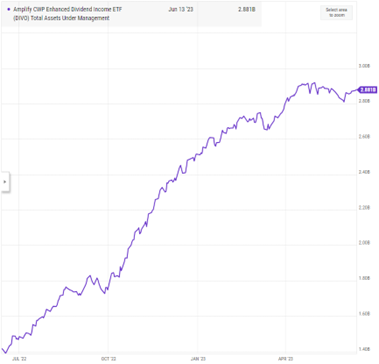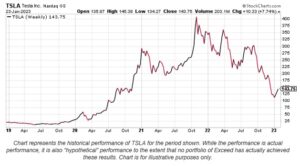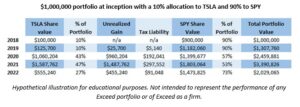How to Use Options to Invest Like Warren Buffett
Warren Buffett is undoubtedly one the most famous and successful investors of all time, yet his strategy is very simple and straightforward – invest in companies that have solid fundamentals, a stable and growing business, and pay dividends. A dividend is simply a portion of the company’s earnings (or in some cases, reserves) that they choose to pay to investors instead of reinvesting in the company. While it’s not guaranteed to always be a set amount or paid in perpetuity, a dividend generates returns for investors even when the price of the company’s stock fails to appreciate. This creates a built-in buffer against volatility and allows the investor to either purchase more shares of the company with this recurring income or simply pocket the payments for use elsewhere. The amount of cash generated via dividends by Buffett’s Berkshire Hathaway is staggering and continues to increase. In 2022 alone, the company received over $6B in dividend payments from its equity holdings.
Recent market trends have many investors reaching for yield, and allocations to dividend-generating investments have exploded in the past year. Two of the more popular vehicles for income-based ETF investing are the JPMorgan Equity Premium Income ETF (JEPI) and The Amplify CWP Enhanced Dividend Income ETF (DIVO) by Capital Wealth. Both instruments employ an active management strategy where the fund holds a portfolio of mature dividend-paying companies and then overlays a covered call strategy against the stock positions. The use of covered calls limits upside for each equity holding over a specified timeframe, but in return the fund receives a steady stream of payments via option premium. This income stream decreases volatility and potentially enhances returns on both an absolute and risk-adjusted basis. These strategies may work well if you are comfortable with the respective ETF managers selecting the underlying securities – if you prefer to select your own exposure and have a specialty manager assist in a covered call overlay, a firm like Exceed can help in the portfolio construction and management via an SMA.
Increase in Assets Under Management Over the Last Year


courtesy of YCharts
The top stock holdings in income-based ETFs generally include companies like VZ, PG, UNH, HSY, PEP, and V. These are considered value investments with businesses that are mature, have stocks that trade at or below average market volatility, and for the most part are growing revenue at modest rates. As a result of these companies’ strong position in the market, management has chosen to return a portion of its profits to investors instead of reinvesting in company-specific ventures. Investing in a diversified portfolio of these types of companies is typically relatively safe and suitable for those with a lower risk tolerance, but potential future upside is expected to be limited when compared to smaller growth or technology companies. Income-based ETFs are often good choices for those close to retirement age, but they’re not for everyone.
Many active investors have an affinity for companies with big growth potential and stocks that trade above average market volatility levels. The tradeoff to investing in growth stocks like TSLA, NVDA, and PLTR is that very few of them pay a dividend – a holder of one of these companies is forfeiting a stream of regular dividend payments for the prospect of excess future returns. While “value” stocks tend to have lower volatility and higher dividends, growth stocks have the opposite – low dividends and higher volatility. Option prices are a function of volatility, with higher volatility driving higher option prices and premiums. As a result, you can generate higher yield writing covered calls on growth names versus value investments. While a practitioner of this strategy may be giving up some upside at times, at other times they will be rewarded handsomely for doing so. Everything else being equal, holding a stock with above average volatility and tactically writing covered calls against it creates the potential for both significant price appreciation and yield generation.
Options offer strategic advantages in different market environments, and many professional investors use them to their advantage on a regular basis – even Warren Buffett, king of buy-and-hold value investing, uses them as part of his strategy. Selling covered calls can significantly enhance total portfolio returns, but structuring and managing these strategies can be tedious and complex. The team at Exceed Advisory has over 40 years of collective professional options experience and can simplify the process for you and your clients. Contact us for a consultation as to how you can use options as an overlay to an existing model portfolio to create your own dividend stream.
IMPORTANT DISCLOSURE: The information in this blog is intended to be educational and does not constitute investment advice. Exceed Advisory offers investment advice only after entering into an advisory agreement and only after obtaining detailed information about the client’s individual needs and objectives. Hedging does not prevent all losses or guarantee positive returns. Options trading involves risk and does not guarantee any specific return or provide a guarantee against loss. Clients must be approved for options trading at the custodian holding their assets. Transaction costs and advisory fees apply to all solutions implemented through Exceed and will reduce returns.
* JEPI and DIVO are not affiliated with or recommended by Exceed Advisory. We are using these two popular ETFs solely to illustrate how a general market strategy that may effectively serve retail investors at relatively low cost differs from Exceed’s approach. Exceed’s options overlay advice is tailored to the specific holdings of the client and will generally result in higher investment costs than a pooled mass-market solution, such as an ETF.



